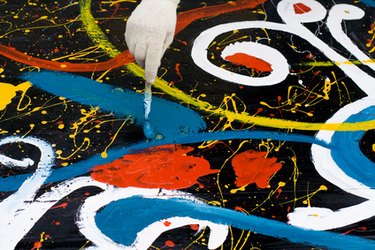Things You'll Need
Acrylic enamel paint
Hardener

Curing or drying time for acrylic enamel paint on vehicles is at least 48 hours, if you use a hardener or catalyst. Then you can sand and buff the surface of your vehicle. You can even apply another coat of some acrylic enamel paint brands after this time. Some individuals rub acrylic enamel out after a week of curing time, while others wait 30 days. Ask a representative in your local paint store to help you choose the right hardener for your selected brand of acrylic enamel paint.
Step 1
Use a fast drying acrylic enamel with drying agents. Even though it dries fast, you can still add hardener to this acrylic enamel. Follow instructions on your specific brand of acrylic enamel paint when adding a proportion of hardener or activator.
Video of the Day
Step 2
Test curing time. Curing occurs when air combines with the binders in the acrylic enamel paint. The air temperature should be at 70 degrees Fahrenheit, when you spray one coat of acrylic enamel paint on your vehicle. Some brands of acrylic enamel will allow you to apply a second coat of acrylic enamel paint after 20 to 30 minutes.
Step 3
Sit your vehicle out in the sun for at least two weeks, then park it in the shade for at least two weeks, before wetsanding and buffing the paint. If you do not want to wait 30 days, continue on to the next step.
Step 4
Lightly press a fingernail into the acrylic enamel paint, to test its degree of dryness. If you do not see a mark, polish and sand the car after sitting the car in the sun for one week.
Tip
Urethane single stage paint is more durable, and it cures quicker than acrylic enamel paint. Also, be sure to read the instructions listed on your acrylic enamel paint. The instructions will specify the recommended time period required for curing -- with or without a hardener or activator.
Warning
Too many coats of acrylic enamel paint makes a surface more susceptible to cracking and chipping and increases cure time. Rain or high humidity that occurs within 16 hours of cure time at 70 degrees Fahrenheit and 50 percent relative humidity can cause blistering of a painted surface.
Video of the Day